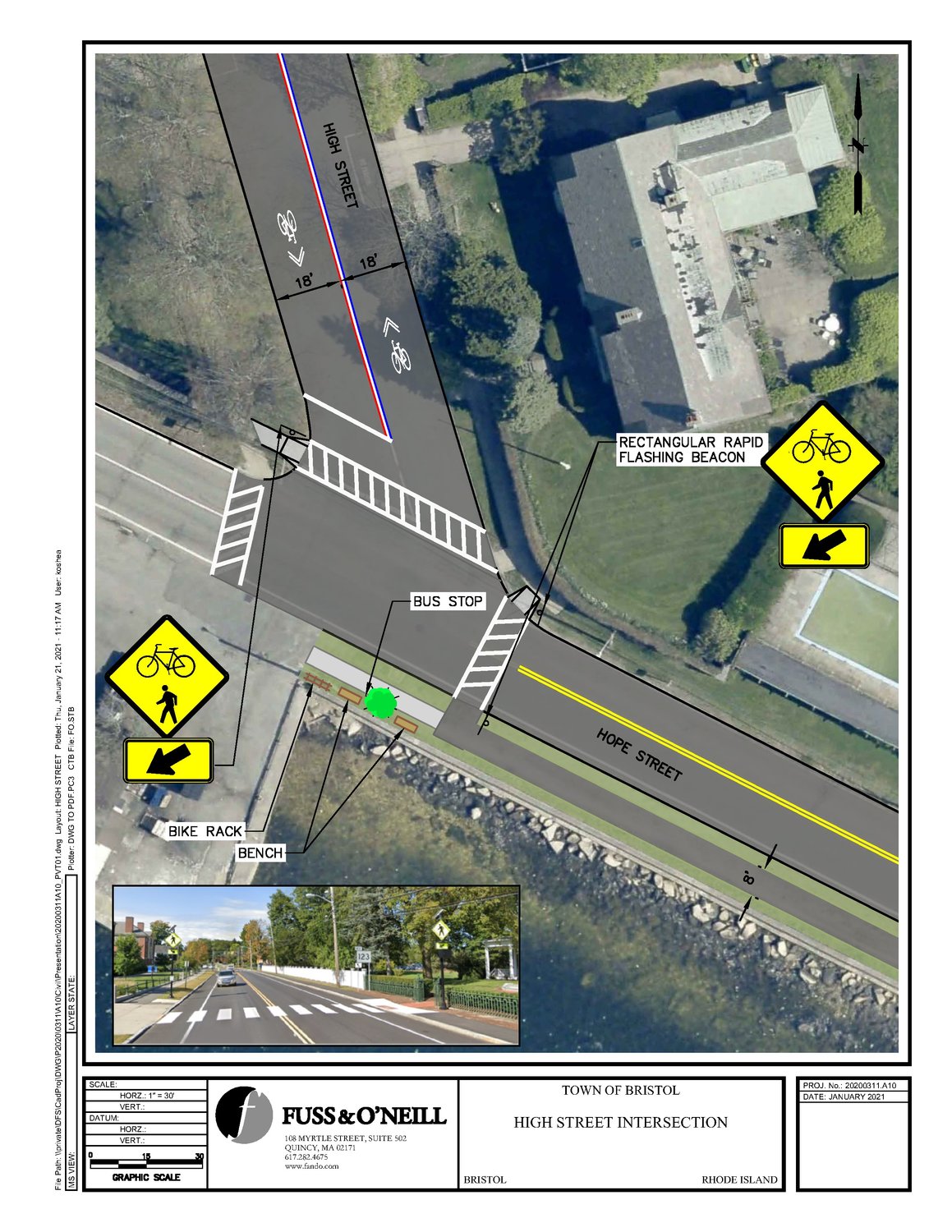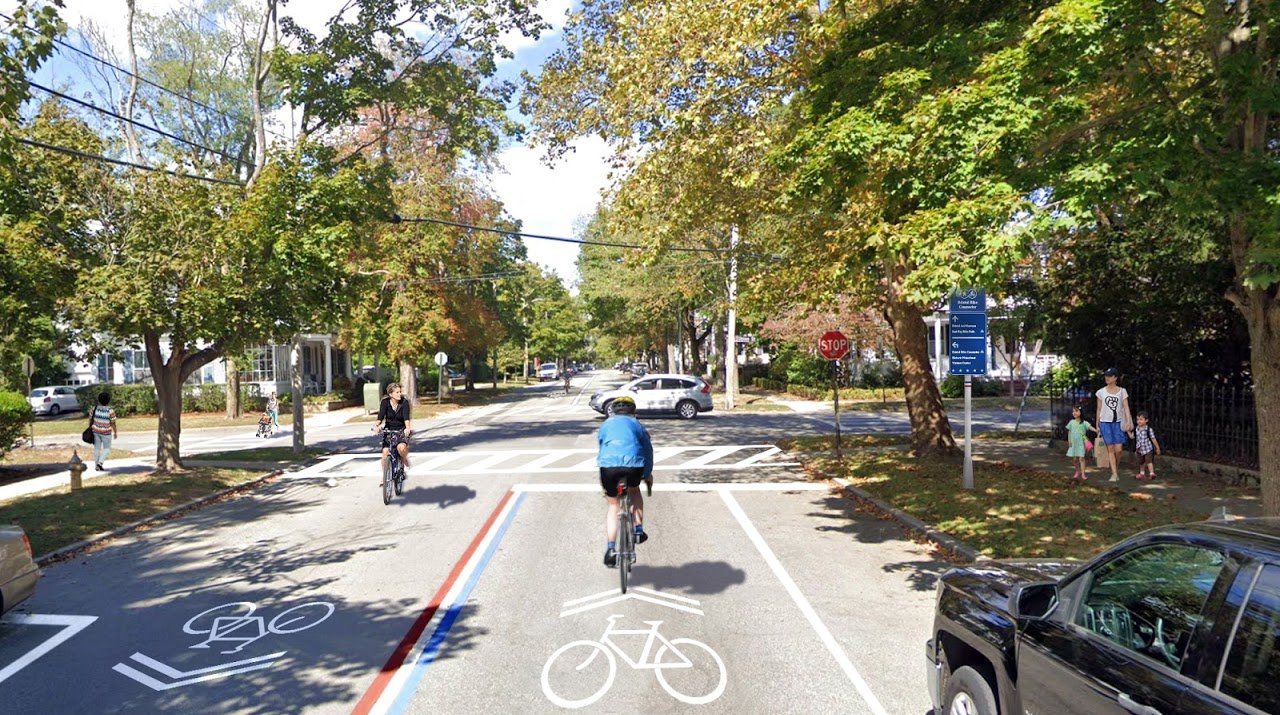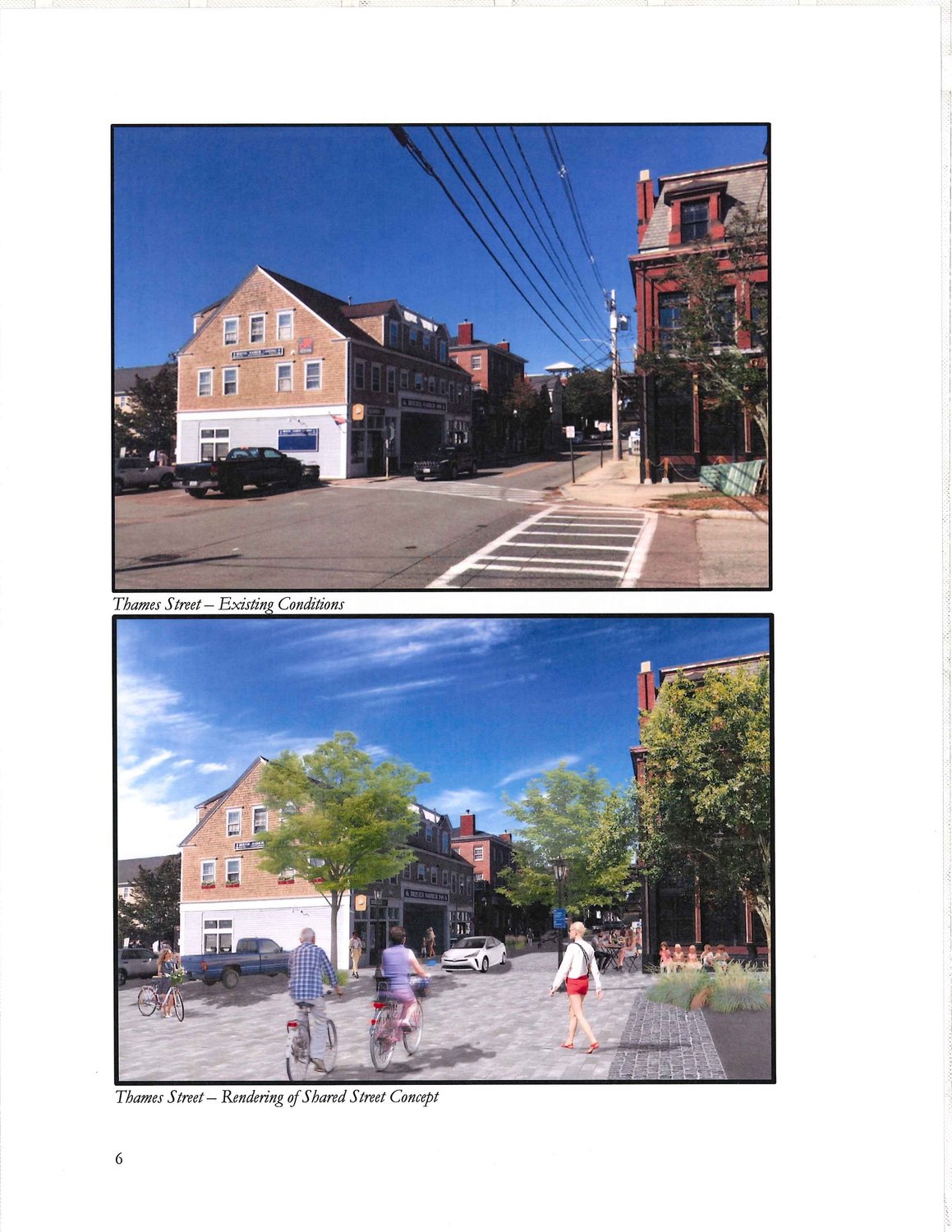- FRIDAY, APRIL 26, 2024
Bristol gives reluctant endorsement to bike path design
Town Council authorizes project to move forward, but with contingencies
The Bristol Town Council gave a somewhat reluctant endorsement to the extension of a bicycle network to the southern end of town Wednesday night. After hearing a presentation on the latest updates to …
This item is available in full to subscribers.
Please log in to continue |
Register to post eventsIf you'd like to post an event to our calendar, you can create a free account by clicking here. Note that free accounts do not have access to our subscriber-only content. |
Day pass subscribers
Are you a day pass subscriber who needs to log in? Click here to continue.
Bristol gives reluctant endorsement to bike path design
Town Council authorizes project to move forward, but with contingencies
The Bristol Town Council gave a somewhat reluctant endorsement to the extension of a bicycle network to the southern end of town Wednesday night. After hearing a presentation on the latest updates to the plan and debating it themselves, all five councilors voted to move forward with the project — with contingencies.
The council wants the design team, which is led by Community Development Director Diane Williamson, to come back before the board before the design reaches the halfway point, so councilors can check in on a few areas of concern. The most contentious is the design of the bike path along scenic Ferry Road, which runs past a series of waterfront homes and Blithewold Mansion and Gardens before it reaches the entrance to Roger Williams University.
Two councilors felt the artist’s rendering of that pathway resembled a “speedway,” with a wide strip of asphalt (8 to 10 feet) and painted lines, that was not in keeping with the look, feel and ambiance of that part of town. They suggested the path through that area should be less conducive to bikes and more conducive to pedestrians.
“It should not be a speedway. I will not vote for a speedway … it’s way too inappropriate for the area,” said council president Nathan Calouro.
Councilor Mary Parella felt similarly. She asked Ms. Williams, “Can we get that down to 7 feet wide, with no split down the middle? … Blacktop with stripe down the middle is the wrong look for that stretch of town.”
Ms. Williamson said she and Arnold Robinson from the Fuss & O’Neill design team will examine the possibilities. Because the project is being funded by a state grant aimed at extending the bike network through the region, they may need to maintain certain width and safety regulations in order to comply with the terms of the funding source. In other words, if they want to use state money to pay for a bike path, they may need to keep it as a bike path — not a walking path.
“If it feels too much like a walking path, then we may need to find a new way to fund it,” Ms. Williamson said.
The other area of concern, mostly for Ms. Parella, is the visual clutter of street markings and signage throughout the downtown district. She would like those markings and signs to be as minimal as possible. The council supported her views by including language to that effect in the motion that passed unanimously.
Others were more unequivocably supportive of the project. Councilor Tim Sweeney said, “This will be a wonderful enhancement to the town, and I think it’s going to be a benefit for years to come.”
Councilor Tony Teixeira said he likes the plan because it provide “walkability” for residents throughout key areas of Bristol. Councilor Aaron Ley said, “Anything that encourages exercise and outdoor activity is great.” He also was excited to see that the town’s merchants group is supporting the effort.
The background
The bike connector project would create a network of pathways for bicyclists (or walkers or runners) to maneuver from the terminus of the East Bay Bike Path on Thames Street, through downtown Bristol, and along Ferry Road to Roger Williams University and the base of the Mt. Hope Bridge. The idea has been met with both enthusiastic support from many bikers, as well as opposition from pockets of Bristol residents, with opponents often living directly along the proposed route.
Last fall, the council neither supported nor rejected the bike plan; it asked the design team to get more feedback from the community, particularly from those along the impacted roads. The team did so by mailing out 800 letters to homes in the downtown district and along Ferry Road, inviting everyone to a series of four separate public workshops held via Zoom.
Ms. Williamson reported to the council that more than 100 people attended the workshops, and that they generated a lot of positive feedback. She reported that in a workshop focused on the Ferry Road part of the plan, residents raised concerns about driveway access, trees, stormwater drainage and the safety of cyclists. She said the design team is continuing to refine plans based on their feedback.
The Wednesday night meeting also gave the council and public an opportunity to see artistic renderings for the path. Though it is envisioned as a truly dedicated path for a short stretch of Hope Street (beginning at the Lobster Pot restaurant) and Ferry Road, it is more of a network of shared streets for the majority of its travelers north-south. As such, cyclists would be able to navigate through downtown Bristol’s grid-like streets along numerous possible routes, through intersections with enhanced street markings and safety measures.
Some in favor, some opposed
In the weeks leading up to last night’s meeting, parties on all sides were working to sway both the council and the public in their favor. Sixteen residents wrote letters to the council — 14 in support and two opposed. MaryKae Wright launched a petition drive for supporters. In the first week, she reported that she had garnered nearly 400 signatures in support of the bike network, with 122 of them from current Bristol residents. She expected to submit an updated list of petitioners to the council last night.
Downtown resident Diane Messere Magee, an attorney and professor of law, submitted a lengthy brief in opposition to the bike path effort. Among other arguments, she claims that if the town allows a state-sponsored bike path to extend over town streets, it would cede some of its control over those streets to state authorities. The existing East Bay Bike Path is a state facility, subject to supervision and maintenance by the state.
Taking down trees
The design team enhanced its plan in a number of ways, both through detailed renderings and further analysis. Stanley Tree Service was contracted to analyze the path’s impact on trees along Hope Street and Ferry Road.
The arborists identified 41 trees along the route and recommended the town maintain all trees with trunks that are at least 12 inches in diameter and in good condition. As such, they recommend that 21 of the 41 trees remain in place. They also suggest removing 20 trees that are either in bad condition or smaller than 12 inches in trunk diameter. They suggest the town plant new trees along the route in places where there are gaps, with the goal of creating a more diverse tree canopy.
Roger Williams offers parking
Lastly, Roger Williams University promised to support the bike route with some dedicated parking. Dr. John King, vice president of student life, notified the town that the university is committed to providing a dedicated parking lot, directly across the street from the proposed terminus of the bike path near the base of the Mt. Hope Bridge.
The parking lot would be available, free of charge, from Memorial Day to Labor Day, with 15 total spaces. The university would also provide a kiosk and signage.
The design team was hoping to win council approval to push forward and produce “shovel-ready” designs for the bike connector network. A state grant is paying for the design phase. There is no funding yet for actual construction.
Other items that may interest you













